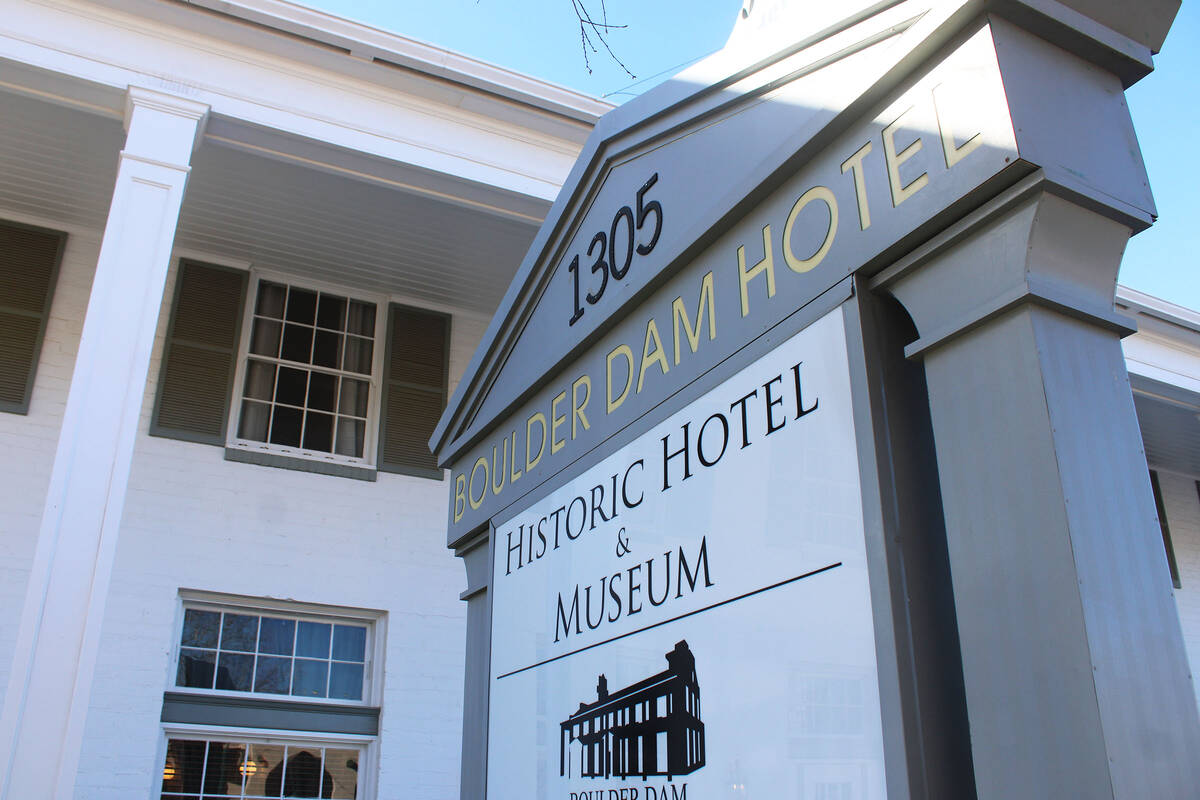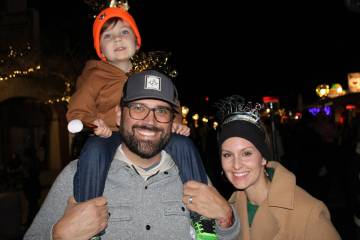Wait. The museum has WHAT in it’s collection?
It was a presentation about the activities and impact of the Boulder City Museum with lots of info and plans and numbers. But most people who saw it will remember it most for the discussion of some of the museum’s more, hmmm, unusual items that are part of the collection.
John Calvert, chair of the board of directors of the Boulder City Museum and Historical Association and Museum Manager Tiane Marie gave the rundown on the 2022/2023 fiscal year to the City Council in their meeting on Feb. 27.
Balancing the museum’s focus on Boulder City’s past with an ever-evolving need to adapt to new technologies and the way people consume information, Calvert ran down the details of the organization’s ongoing effort to digitize their entire collection. The digitizing program continues to accelerate with 2,000 hours budgeted this year for a specialist up from 700 hours last year.
According to Calvert, the board is looking to eventually allocate an additional 1,000 volunteer hours — a nearly 30-fold increase over the 36 volunteer hours spent on digitizing in the last fiscal year.
“The digitization project will include all of our photos, manuscripts, articles, documents, books, maps, etc. as well as our three-dimensional items,” reported Marie. “Obviously, with all that we have, it is going to take several years to digitize our entire collection.”
According to Marie, there are 18,972 entries so far in the digital index, which is accessible via the museum’s website.
“New update,” she said. “In this current fiscal year, we are about done with our photo collection to be completely digitized. So we are almost current with that, which is very exciting.”
Housed in the historic Boulder Dam Hotel, the museum is a significant tourist draw to Boulder City with 43,090 visitors to the museum in the last fiscal year. Marie said that the museum hosts between two and five tours a day, seven days a week. “We hosted 21 tour companies in 2022-2023.”
In addition, WalkBC, the self-guided, audio walking tour of Boulder City — which is free — has hosted about 5,500 visitors.
Finishing up the numbers, Marie reported 540 students hosted, 829 new items donated in the last fiscal year and 35 historical plaques distributed for properties around the downtown area. The last item is a paid program and, in addition to selling the plaques, the museum also provides historical info to the owners of those properties.
Finally, Marie reported 600 volunteer hours in the last fiscal year.
Another significant project undertaken by the group is the restoration of the Fenton home.
“For the Fenton house, at 640 Ave. C, during 2022-2024, we cleaned up the property and replaced the roof in order to protect the structure as there were signs that the roof was beginning to fail,” Marie said. “We have a project scheduled in May for the restoration of the building’s windows. This was made possible by a grant from the state historical preservation office.”
Marie added that the organization is still seeking a general contractor for the restoration of the house and hopes to begin that project in the second half of 2024.
Councilmember Cokie Booth asked for an explanation of why the Fenton house is important. The late Teddy Fenton, Marie explained, was a big part of the history of the museum itself.
“She is the founding mother,” she said. “She is the reason the collections even exist. That is why, her living legacy.” Fenton lived in BC from the time of her arrival with her husband in 1931 until her death in 2005.
“As far as we can tell,” Calvert added, “this is the only original floor plan still standing of the “Dingbat” houses. So, for us, it’s very important to preserve that.”
The houses, located along the alphabet streets, were called dingbats due to their quick and often shoddy construction. One and a half houses were framed out in a single day and the boxy structures were never meant to last. The intention was to tear them down after construction was completed on Hoover Dam. That did not happen and many of the houses still exist, but all of the others have been greatly altered and added-on-to over the ensuing years.
According to Fenton’s family, she bought it in 1980 with the intent to donate it to the museum. That donation occurred in 2017.
Moving on the the less structural parts of the museum’s collection, Councilmember Sherri Jorgensen asked, “What does a typical material donation look like?”
“There is a range,” Marie explained. “It could be a large basket full of pictures all the way down to tiny little thumbnails from a person who worked on the dam. To a big ol’ box that just shows up on my front lobby’s porch and inside it goes from blueprints from the power houses to letterhead from the desk of someone very important contracting-wise down to photographs that are two inches by three inches.”
Marie continued, “It could be everything and anything you can picture. My weirdest one, if you really are curious, has been a bandage or a tooth. We have those.”
Mayor Joe Hardy piped in. “The doctor in me has to ask. Was it a used bandage?”
“Yes,” Marie reported. “Everything medical-wise that I have in my collection is used. Syringes. Everything.”
She suggested that maybe the mayor would like to volunteer to help catalog some of that material.
“We appreciate your willingness and your passion,” Hardy replied against a backdrop of laughter from the room.
















